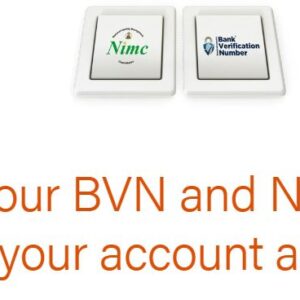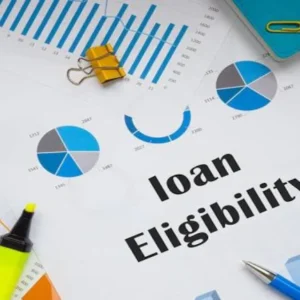
Outline:

- Introduction: Why Debt Forgiveness Is a Burning Issue
- Understanding the Debt Crisis
- Why Policy Reform Is Needed Now
- What Is Debt Forgiveness?
- Types of Debt That Qualify
- The Role of Lenders and Governments
- How Policy Reform Impacts Personal Finance
- Reduced Financial Stress for Borrowers
- Increased Economic Participation
- Student Loan Forgiveness: A Central Battleground
- What the Biden Administration Proposed
- Legal Pushbacks and the Supreme Court Rulings
- Medical Debt Forgiveness: A Growing Necessity
- How Hospitals and States Are Taking Initiative
- Credit Score Impact and Relief
- Credit Card Debt Forgiveness: Myth or Reality?
- Role of Credit Counseling and Debt Settlement
- Why Banks Rarely Offer True Forgiveness
- Mortgage Debt Relief: Is Another Bailout Coming?
- Lessons from the 2008 Financial Crisis
- Forbearance and Principal Reduction Programs
- The Role of AI in Policy-Based Debt Management
- Automating Eligibility Screening
- Personalized Debt Solutions at Scale
- How Debt Forgiveness Affects Your Credit
- Short-Term vs Long-Term Credit Score Impacts
- How to Rebuild After Forgiveness
- Global Models of Debt Forgiveness: What Can We Learn?
- Scandinavia and the Welfare State Model
- Jubilee Debt Campaign in the UK
- Challenges to Implementing Debt Forgiveness Policy
- Political Polarization
- Economic Costs vs Long-Term Benefits
- Future Forecast: What the Next Decade Could Look Like
- Will We See Universal Basic Relief?
- Tech, Politics, and Public Pressure
- Actionable Steps to Position Yourself Now
- Monitor Legislative Proposals
- Improve Credit Standing While You Wait
- Conclusion: A Hopeful Yet Realistic Future for Debt Forgiveness
- FAQs
- What is debt forgiveness and how does it work?
- Can student loans be forgiven completely?
- Does debt forgiveness affect my credit score?
- Are there government programs for credit card debt relief?
- What can I do while waiting for policy reform?
Unlocking the Future of Debt Forgiveness: Can Bold Policy Reforms Revolutionize Personal Finance or Lead to Unforeseen Consequences in the Next Decade?

Introduction: Why Debt Forgiveness Is a Burning Issue
The future of debt forgiveness has quickly become one of the most urgent financial discussions of our time. As inflation rises, wages stagnate, and global economies shift, millions are stuck in a cycle of overwhelming debt with no end in sight. From student loans to medical bills, credit cards to mortgages, borrowers are drowning—and they’re looking to policymakers for a lifeline.
But can sweeping policy reform truly reshape personal finance over the next decade? And if so, how can everyday people prepare for this shift?
Let’s break it all down.
What Is Debt Forgiveness?
At its core, debt forgiveness refers to the cancellation or reduction of a borrower’s obligation to repay a loan. This can be partial (e.g., a $50,000 loan reduced to $30,000) or total (complete cancellation).
Types of Debt That Qualify
- Student loans (especially federal loans in the U.S.)
- Medical bills (especially through charity care programs)
- Credit card debt (through settlement or bankruptcy)
- Mortgage debt (during housing crises or via government intervention)
The Role of Lenders and Governments
Debt forgiveness isn’t usually voluntary—it’s driven by legislation, court rulings, or structured agreements between borrowers and creditors. The government plays a critical role, especially in federally backed loans.
How Policy Reform Impacts Personal Finance
When policy leads to widespread debt cancellation, it doesn’t just benefit individuals—it affects the entire economy.
Reduced Financial Stress for Borrowers
Debt forgiveness lightens the monthly burden for millions, allowing people to:
- Save money
- Invest
- Pay off other obligations
- Improve mental health and family stability
Increased Economic Participation
Freed from debt, people spend more, take entrepreneurial risks, buy homes, and boost GDP.
According to a report by the Roosevelt Institute, mass student loan forgiveness could inject billions into the economy annually.
Student Loan Forgiveness: A Central Battleground
Perhaps the most debated form of debt forgiveness, student loan reform has drawn massive political, legal, and generational scrutiny.
What the Biden Administration Proposed
President Biden proposed canceling up to $20,000 for Pell Grant recipients and $10,000 for others making under $125,000 annually. The aim was to:
- Shrink the racial wealth gap
- Boost young adult economic mobility
- Reduce default rates
Legal Pushbacks and the Supreme Court Rulings
In 2023, the Supreme Court struck down Biden’s plan. Still, alternative plans like SAVE (Saving on a Valuable Education) have expanded income-driven repayment forgiveness.
📌 Resource: Official SAVE Plan Info

Medical Debt Forgiveness: A Growing Necessity
In the U.S., two-thirds of bankruptcies are linked to medical debt.
How Hospitals and States Are Taking Initiative
Some hospitals now automatically forgive unpaid bills for patients under certain income thresholds. States like California and New Mexico are also launching relief programs for low-income residents.
Credit Score Impact and Relief
In 2022, the three major credit bureaus announced that paid medical debt would no longer impact credit scores, offering major relief for millions.
Credit Card Debt Forgiveness: Myth or Reality?
Unlike student loans, credit card debt is harder to forgive—banks rarely offer cancellation unless a borrower is in default or hardship.
Role of Credit Counseling and Debt Settlement
Non-profit agencies can help negotiate lower interest or payments. Private firms may settle balances for a fee—but at the cost of credit score hits.
Why Banks Rarely Offer True Forgiveness
Forgiving unsecured debt sets a risky precedent. Instead, they focus on restructuring terms.
Mortgage Debt Relief: Is Another Bailout Coming?
The 2008 financial crisis triggered mortgage bailouts, principal reductions, and loan modifications.
Lessons from the 2008 Financial Crisis
Programs like HAMP and HARP helped millions—but they also revealed how slow and complex policy-driven debt relief can be.
Forbearance and Principal Reduction Programs
Post-COVID forbearance allowed homeowners to skip payments without foreclosure. These programs may serve as templates for future mortgage forgiveness.
The Role of AI in Policy-Based Debt Management
Yes, AI is entering the debt forgiveness space too.
Automating Eligibility Screening
AI can rapidly assess whether a borrower qualifies for a relief program, saving time and avoiding paperwork bottlenecks.
Personalized Debt Solutions at Scale
Platforms like Tally and Bright Money use AI to craft optimized debt repayment plans and even negotiate with lenders.
How Debt Forgiveness Affects Your Credit
Short-Term vs Long-Term Credit Score Impacts
Initially, forgiveness may cause a dip—especially with charge-offs or settlements. However, in the long term, reduced debt load improves:
- Credit utilization
- Payment history
- Overall score stability
How to Rebuild After Forgiveness
- Keep older accounts open
- Use secured cards to rebuild
- Pay all future bills on time
- Monitor your credit using tools like Credit Karma or Experian
Global Models of Debt Forgiveness: What Can We Learn?
Scandinavia and the Welfare State Model
Countries like Sweden and Norway embed forgiveness into their education and health systems. They rarely allow debt to become debilitating.
Jubilee Debt Campaign in the UK
This movement has seen progress in canceling developing countries’ debt and inspired similar calls for domestic reform.
Challenges to Implementing Debt Forgiveness Policy
While the future of debt forgiveness holds promise, turning policy ideas into actual impact is far from simple. It involves navigating political resistance, budgetary limitations, public skepticism, and institutional complexity. The challenges are multifaceted—and if we want real reform, we have to understand what’s standing in the way.
Let’s unpack the biggest obstacles slowing down meaningful debt forgiveness.
1. Political Polarization and Partisan Gridlock
One of the biggest roadblocks to debt forgiveness policy is the political tug-of-war. In many countries—especially the U.S.—debt relief is framed through partisan ideology.
- Progressives argue that debt forgiveness is a moral and economic necessity, especially in an era of widening wealth gaps, rising student loans, and medical bankruptcy.
- Conservatives, however, often view it as a handout or reward for irresponsibility, believing it discourages personal accountability and punishes those who paid their debts.
This ideological rift makes it incredibly hard to pass large-scale legislation, even when there’s public support.
📌 Example: President Biden’s 2023 student loan forgiveness plan was blocked by the U.S. Supreme Court after political and legal challenges from Republican-led states.
2. Economic Trade-offs and National Budget Concerns
Debt forgiveness isn’t “free.” It often comes at a cost to taxpayers or government budgets, which raises the question: who foots the bill?
Critics argue:
- Large-scale forgiveness programs could increase the national deficit.
- Funds could be better spent on education reform, job creation, or healthcare.
- Debt relief could trigger inflationary pressure by injecting too much liquidity into the economy.
Supporters counter that the long-term economic stimulus of debt relief—higher consumer spending, better mental health, reduced default rates—outweighs the upfront cost.
Still, the fiscal balancing act is a real challenge for policymakers.
3. Complexity in Implementation and Eligibility Criteria
Even when a debt relief program is approved, rolling it out is a logistical nightmare.
Key obstacles include:
- Verifying who qualifies (e.g., income, loan type, payment history)
- Managing millions of applications
- Integrating relief into existing loan systems
- Preventing fraud or misuse
For instance, many borrowers don’t benefit from forgiveness programs simply because they don’t know they qualify or they can’t complete the complex paperwork required.
The Public Service Loan Forgiveness (PSLF) program in the U.S. is a prime example—only a tiny fraction of eligible borrowers ever received relief until reforms were introduced.
4. Risk of Moral Hazard
Critics often cite the concept of moral hazard—the idea that if people expect their debt to be forgiven, they’ll be less likely to borrow responsibly in the future.
This concern has led to:
- Reluctance among lenders to support reforms
- Tighter lending criteria
- Pushback against making forgiveness automatic or predictable
However, this risk can be managed with clear boundaries, like:
- One-time forgiveness limits
- Relief tied to hardship or public service
- Stronger financial literacy education post-forgiveness
5. Lack of Public Consensus
Although many people are drowning in debt, there’s still a divided public opinion on forgiveness.
- Some taxpayers who paid off their debts feel “cheated” by new forgiveness programs.
- Others believe the system is broken and that it’s unfair to blame borrowers for systemic issues, such as predatory lending or sky-high tuition.
This mixed sentiment makes it hard for policymakers to justify sweeping action without facing backlash.
6. Institutional Resistance from Financial Institutions
Let’s not forget the banks, lenders, and credit companies. Many of them rely on interest payments and penalties from debt as a core revenue stream.
Debt forgiveness threatens:
- Their business models
- Shareholder expectations
- Long-term profitability
As a result, lobbying efforts from financial institutions often derail or dilute proposed policies. These institutions have significant political influence, and their resistance can stall reforms behind the scenes.
7. Fragmented Debt Systems
Debt isn’t always centralized. Especially in countries like the U.S., debt can be:
- Federal
- Private
- Institutional
- Medical (via hospitals or providers)
- Credit-based (through dozens of issuers)
This fragmentation makes it incredibly hard to implement unified debt relief policies. Some lenders might participate in forgiveness programs, while others opt out—leading to confusion and inequity.
8. Inequitable Distribution of Benefits
Another complication is ensuring that debt relief actually helps those who need it most.
Poorly designed programs may:
- Over-reward high-income borrowers (e.g., grad students with large loans)
- Miss those with smaller, but unmanageable, debts
- Widen racial and socioeconomic gaps instead of closing them
The challenge is to balance universality with targeted impact, and that’s a policy design puzzle few governments have solved effectively.
9. Legal Limitations and Constitutional Hurdles
Even with executive will, courts may block debt forgiveness efforts on legal grounds:
- Exceeding executive authority
- Violating contracts or separation of powers
- Misuse of emergency powers
This is especially true when policy reform bypasses legislative processes or stretches existing statutes.
📌 Example: The U.S. Supreme Court struck down the federal student loan cancellation plan in 2023 due to overreach under the HEROES Act.
10. Timing and Economic Context
Debt forgiveness tends to gain traction during economic crises, like the 2008 housing crash or the COVID-19 pandemic. But once the urgency fades, momentum dies, and reforms stall.
Waiting for the “perfect moment” often means missed opportunities, while acting too late can lead to minimal impact.
Final Thoughts on These Challenges
Yes, the hurdles to implementing debt forgiveness are real—and they’re not going away overnight. But understanding these barriers is the first step to overcoming them.
What’s needed?
- Smarter policy design
- Bipartisan negotiation
- Public education
- Technological innovation
- And a commitment to fairness, not just forgiveness
The conversation has already begun—what happens next depends on how well we navigate it.
Future Forecast: What the Next Decade Could Look Like
Will We See Universal Basic Relief?
As debt burdens rise, expect more calls for:
- Automatic forgiveness after X years of repayment
- Universal relief programs tied to economic conditions
- Debt ceilings to cap borrower exposure
Tech, Politics, and Public Pressure
AI, activism, and generational shifts may push politicians toward smarter, more compassionate policy designs.
Actionable Steps to Position Yourself Now
Monitor Legislative Proposals
Follow changes through:
Improve Credit Standing While You Wait
Focus on:
- Paying down high-interest cards
- Avoiding new debts
- Using budgeting tools like YNAB, Rocket Money, or Cleo
READ MORE: Revolutionary Digital Banking and Automated Budgeting: Powerful Tools Reshaping Personal Debt Management for a Better Future (or a Looming Crisis)
Conclusion: A Hopeful Yet Realistic Future for Debt Forgiveness
The future of debt forgiveness sits at the intersection of policy, technology, public will, and personal transformation. It’s no longer just a political talking point—it’s a financial necessity for millions facing the daily weight of unmanageable debt. From student loans that haunt borrowers well into their 40s, to medical bills that force families into bankruptcy, the system is signaling one clear message: reform is overdue.
While there are undeniable challenges—legal, political, logistical—the momentum for change is growing. Governments are beginning to listen. Institutions are slowly adapting. AI is accelerating eligibility screening, personalized repayment, and financial education at scale. And most importantly, the public is becoming more aware, more vocal, and more united in demanding relief that is fair, accessible, and transformative.
But here’s the reality: debt forgiveness alone is not the solution. It’s a powerful step, but it must be paired with structural change—affordable education, transparent lending, stronger consumer protection laws, and widespread financial literacy.
For individuals, the key is not to wait helplessly for policy to shift. Be proactive. Educate yourself on available relief programs. Use digital tools to manage your current debt. Track legislative movements that affect your finances. Prepare your credit, protect your income, and position yourself to take full advantage when reform does come.
Because one thing is certain: when debt forgiveness is finally implemented at scale, the people who are best informed and financially prepared will benefit the most.
So, stay ready. Stay engaged. And above all, stay hopeful—because personal finance in the next decade may not be defined by what you owe, but by how boldly you stepped into financial freedom when opportunity came knocking.
FAQs
1. What is debt forgiveness and how does it work?
Debt forgiveness refers to canceling or reducing the amount you owe. It’s often driven by policy or hardship-based programs.
2. Can student loans be forgiven completely?
Yes, especially federal student loans. Programs like PSLF, SAVE, and income-driven repayment offer partial or full forgiveness.
3. Does debt forgiveness affect my credit score?
Initially, yes. But over time, it improves your credit by reducing balances and restoring financial stability.
4. Are there government programs for credit card debt relief?
Not directly, but you can explore non-profit credit counseling, bankruptcy, or negotiated settlements.
5. What can I do while waiting for policy reform?
Focus on improving your credit, tracking legislative changes, and using AI budgeting tools to stay ahead.






